 Even during the COVID-19 pandemic, we found opportunities to celebrate what makes Seattle special and set the stage for recovery. Photo Credit: SDOT.
Even during the COVID-19 pandemic, we found opportunities to celebrate what makes Seattle special and set the stage for recovery. Photo Credit: SDOT. In a year that challenged all of us in so many ways, SDOT rose to the occasion and delivered projects and programs that supported our communities.
We’re coming to the end of one of the most challenging years in our city’s recent history. Just like everyone in our community, SDOT had to make significant changes to keep our workforce of over 1,000 dedicated people safe and healthy through it all. Time and again, SDOT rose to the occasion and worked together to deliver some of our most innovative work and biggest projects to date. As we look forward to a new and hopeful year, we’re highlighting the excellent work our teams accomplished together, taking stock of just how much we got done, and witnessing all of the momentum, opportunity, and accomplishment we bring into the New Year for Seattle.
This compilation isn’t meant to be a complete list, but rather a chance to pause, look back, and be proud of the work delivered by SDOT’s enduring teams in conjunction with many communities and partners.
Table of Contents
Greatest Hits from 2020
- Stay Healthy Streets, Blocks, & Temporary Permits
- West Seattle High-Rise Bridge Safety Program
- Rainier Corridor Phase 2 Project
- Speed Limit Adjustments
- Lander St Bridge
All Projects
West Seattle High-Rise Bridge Safety Program | Delridge Way SW RapidRide H Project | NE 43rd St Improvements | Lander Street Bridge | 8th Ave S Sidewalk Improvements | Northgate Pedestrian and Bike Bridge | Right of Way Maintenance and Urban Forestry | Madison BRT/Rapid Ride G | Paving in Alaska Junction | Bridge Repair in Whatcom County | Alaskan Way Viaduct Program | Stay Healthy Streets | Rainier Corridor Phase 2 Project | Speed Limit Adjustments | Leading Pedestrian Intervals | 4th Ave Mobility Improvement Project | Funding for Transportation Priorities | Transition to Accela | Public Space Management (PSM) Stay Healthy Permitting | Transportation Equity Workgroup | Building Transit for the Future | 145th/SR 522 Bus Rapid Transit Project | Innovative Curb Space Management | Scooter – Bike – Car Share
Greatest Hits from 2020
And now, in no particular order, are some of the ways SDOT made 2020 a little better for our communities:
Stay Healthy Streets, Blocks, & Temporary Permits

Keep Moving Street on Lake Washington Blvd. Photo Credit: Jeanné Clark. 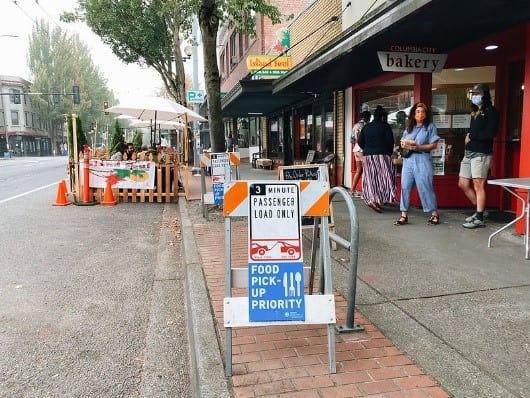
Food Pick-Up Priority zone and outdoor dining. Photo Credit: Jeanné Clark.
When the COVID-19 restrictions hit, we stepped into action to support businesses with new free permit types to allow sidewalk cafes and vending in the right-of-way. Through Stay Healthy Streets and Keep Moving Streets, we converted over 25 miles of Neighborhood Greenways and streets near popular parks to make space for people walking, rolling, and biking – and extended the program to allow for temporary Stay Healthy Block closures, too! We also launched a parking permit program for hospital workers to help address their transportation needs.
West Seattle High-Rise Bridge Safety Program
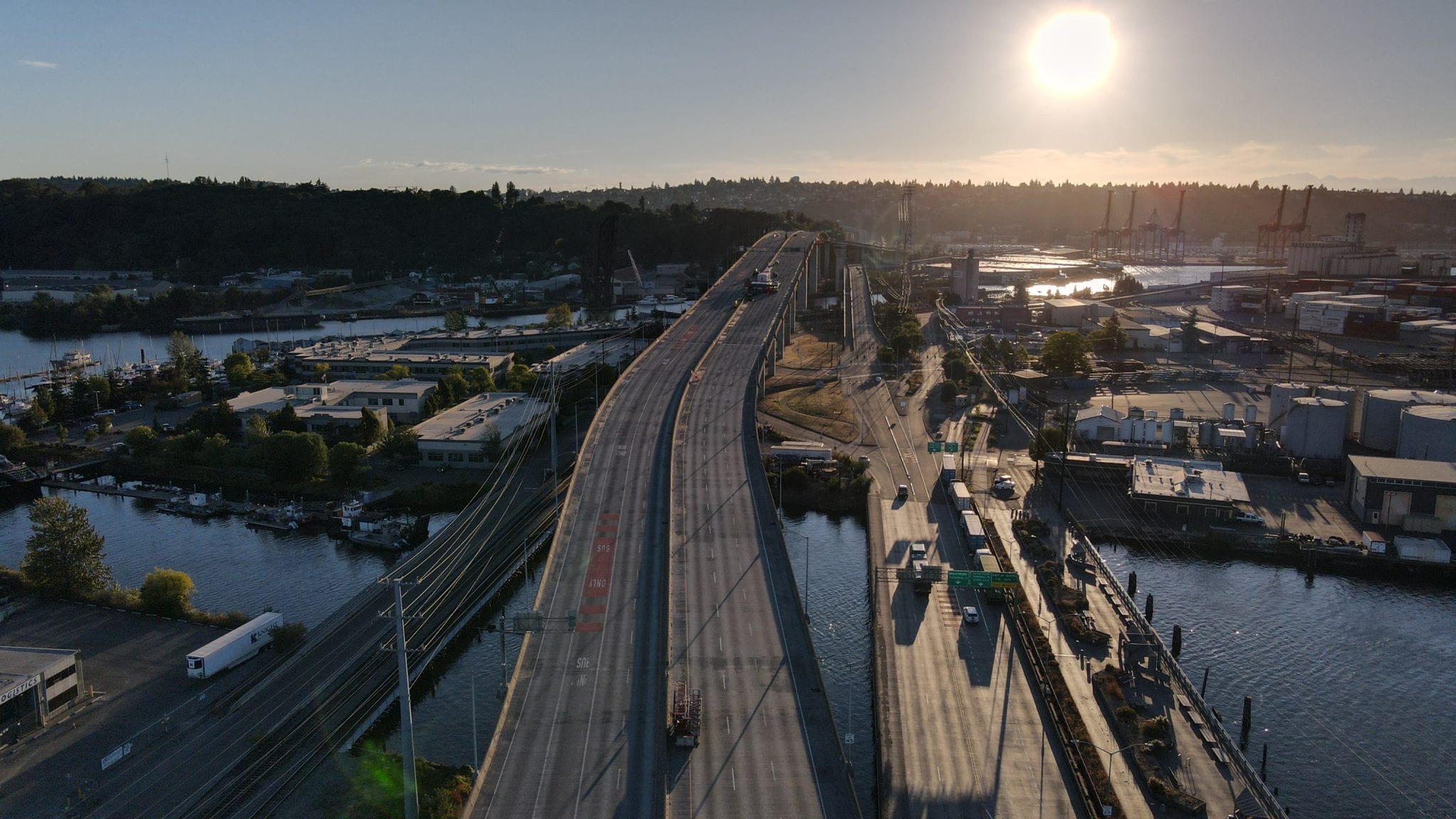
The sudden emergency closure of the West Seattle High-Rise Bridge, which carried over 100,000 people a day, has been very challenging for both SDOT and the traveling public. When we closed the bridge to traffic, our team centered the people affected by responding swiftly and mitigating impacts for travelers on the peninsula and in nearby communities. Together with the Department of Neighborhoods (DON), our team led the Reconnect West Seattle ballot and survey effort which generated over 16,000 survey responses and 1,700 project ballots. To date, we have implemented 185 projects, including the 23 highest-priority 2020 projects, including paving work on detour routes by our asphalt crews, and we are now conducting outreach and designing with more to deliver in 2021.
All of this work represents ongoing collaboration between planning, design, outreach and implementation staff, including our crews. A Community Task Force, a Low Bridge Access Committee, and two advisory groups were established for maritime businesses and employers to help shape our efforts, and our Emergency Management team facilitated the issuance of the City’s first Mayoral Emergency Declaration for City Infrastructure.
Our team led the Task Force through an in-depth review of a Cost Benefit Analysis to help evaluate repair and replacement options for the High-Rise Bridge. At the same time, we urgently moved forward to provide the initial stabilization needed to secure the High-Rise Bridge, preserve public safety, and lay the groundwork for future repairs. (Watch this video for an inside look at these stabilization efforts!) We’re now going ahead with repair of the High-Rise Bridge, and will continue to keep transparency and people at the center of our efforts to navigate the closure, minimize its impacts, and restore connectivity to West Seattle as quickly and as safely as possible.
Rainier Corridor Phase 2 Project
Funded by the Levy to Move Seattle

We implemented bold street design changes to address a long history of serious collisions on Rainier Ave S. Our Vision Zero program collaborated with communities to design these changes to make Rainier easier to cross for people walking, reduce vehicle speeds, and enhance transit service by adding new red bus lanes.
Speed Limit Adjustments
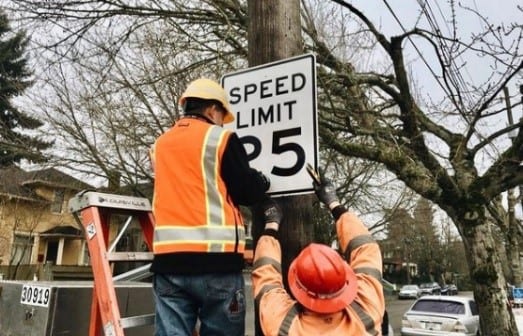
We lowered speed limits throughout the city on more than 200 miles of streets, and our signs and markings crews, with assistance from our urban forestry crews, added and replaced signs to reduce the frequency and severity of crashes. Now, most of Seattle’s arterials have 25 mph speed limits, and we will complete the speed limit sign changes in 2021.
Lander Street Bridge
Funded by the Levy to Move Seattle
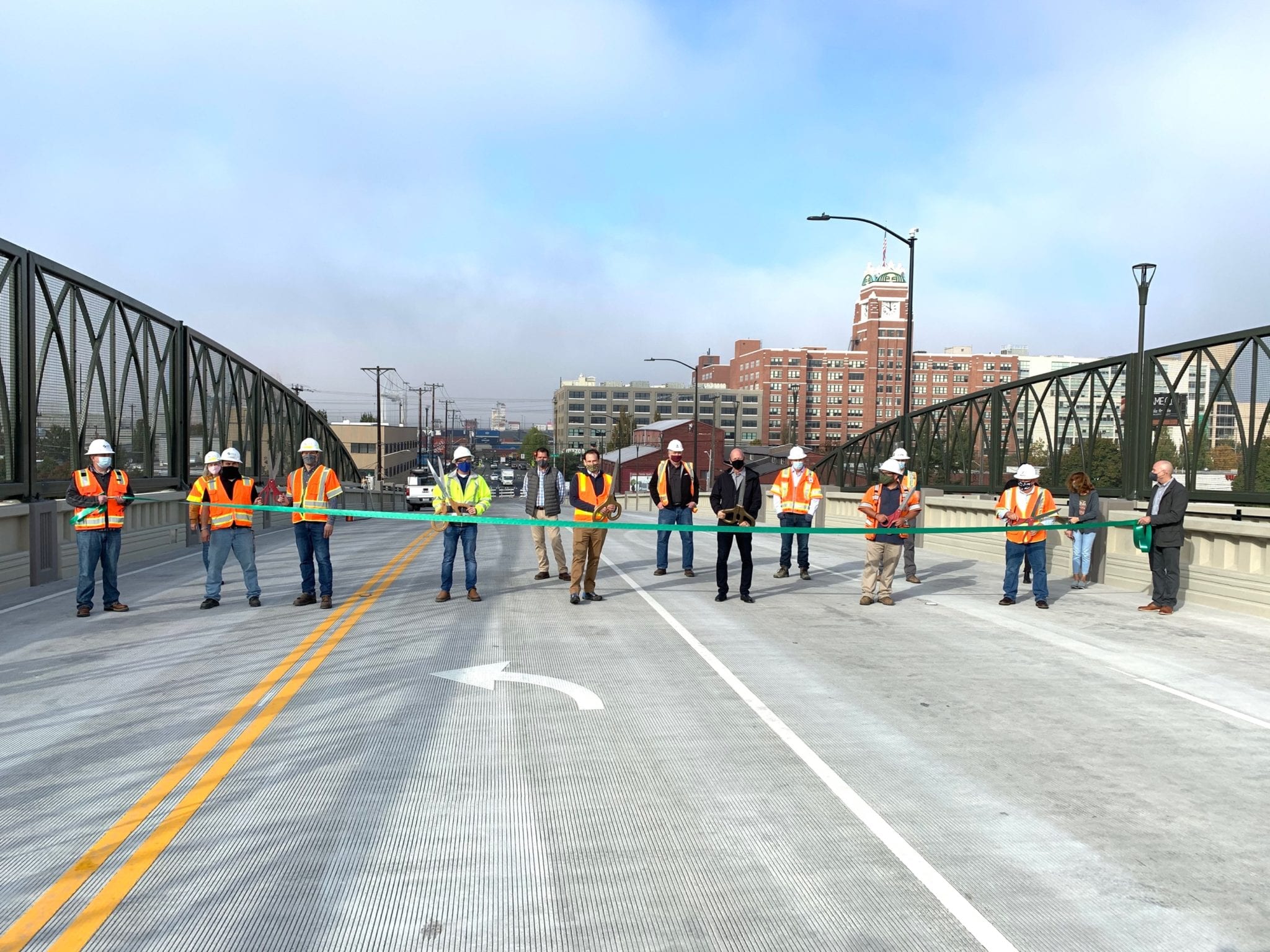
After years of planning and partnership, the Lander St Bridge symbolizes the big things we can accomplish when we come together across interests, industries, modes and the region. Prior to the bridge, S Lander St closed over 100 times on a typical day for train crossings, leading to travel delays, lost revenues, increased idling, and safety risks – especially for people walking, rolling, and biking.
Read on for more details on the above projects and other amazing work from SDOT.
West Seattle High-Rise Bridge Safety Program
The sudden emergency closure of the West Seattle High-Rise Bridge, which carried over 100,000 people a day, has been very challenging for both SDOT and the traveling public. When we closed the bridge to traffic, our team centered the people affected by responding swiftly and mitigating impacts for travelers on the peninsula and in nearby communities. Together with the Department of Neighborhoods (DON), our team led the Reconnect West Seattle ballot and survey effort which generated over 16,000 survey responses and 1,700 project ballots. To date, we have implemented 185 projects, including the 23 highest-priority 2020 projects, including paving work on detour routes by our asphalt crews, and we are now conducting outreach and designing with more to deliver in 2021.
All of this work represents ongoing collaboration between planning, design, outreach and implementation staff, including our crews. A Community Task Force, a Low Bridge Access Committee, and two advisory groups were established for maritime businesses and employers to help shape our efforts, and our Emergency Management team facilitated the issuance of the City’s first Mayoral Emergency Declaration for City Infrastructure.
Our team led the Task Force through an in-depth review of a Cost Benefit Analysis to help evaluate repair and replacement options for the High-Rise Bridge. At the same time, we urgently moved forward to provide the initial stabilization needed to secure the High-Rise Bridge, preserve public safety, and lay the groundwork for future repairs. We’re now going ahead with repair of the High-Rise Bridge, and will continue to keep transparency and people at the center of our efforts to navigate the closure, minimize its impacts, and restore connectivity to West Seattle as quickly and as safely as possible.
Delridge Way SW RapidRide H Project
Funded by the Levy to Move Seattle
Our team is working to improve the street and neighborhood through multimodal improvements in coordination with Metro’s RapidRide service. The Delridge Way SW RapidRide Project is on schedule and on budget, despite the sudden emergency closure of the West Seattle High-Rise Bridge and COVID-19 pandemic. The team constructed 25% of the 4.5-mile-long corridor, including underground utility work, transit improvements, new paving, pedestrian and bike improvements, signal and Intelligent Transportation System (ITS) improvements, and a new planted median. More great work is in store for 2021 to help create a safer, smoother, and more business- and resident-friendly street in the heart of Delridge and get us ready for the new RapidRide H Line launch in 2022. This is one of several RapidRide projects made possible by the Levy to Move Seattle.
NE 43rd St Improvements
Funded by the Levy to Move Seattle

It takes a team to build a more livable, equitable, and connected City. This project is a perfect example. As Sound Transit extends light rail to the region, SDOT works to ensure the area around the station is ready for people walking, biking, and rolling to get there safely. The project team is delivering streetscape and pedestrian improvements on NE 43rd Street between Brooklyn Ave NE and 15th Ave NE to improve access to the U District Link light rail station, which is scheduled to open in 2021. This extension of the light rail line will transform how people get around and is projected to serve up to 26,000 riders daily by 2042. Improvements include innovative design elements such as curbless sidewalks, conversion to one-way vehicular travel for improved space for people walking, rolling, and biking, a soil cell pilot study, and sidewalk inlays.
Lander Street Bridge
Funded by the Levy to Move Seattle
S Lander St is an essential east-west connection in Seattle’s SODO neighborhood, rising above the multiple railroad tracks that previously required the street to be closed over 100 times per day for train crossings. Now, after years of planning, collaboration, and partnership, the Lander St Bridge is a reality. Funded by the Levy to Move Seattle as well as federal, state and regional partners, the completion of the Lander St Bridge symbolizes the big things we can accomplish when we all come together across interests, industries, and modes.
8th Ave S Sidewalk Improvements
Funded by the Levy to Move Seattle

The east side of 8th Ave S today, with sidewalk and parking restored. Photo Credit: David Burgesser. 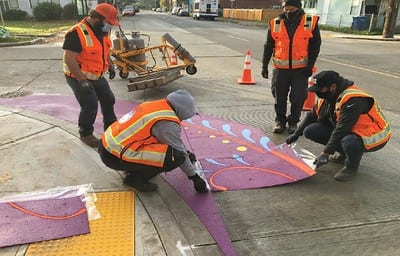
Laying a curb bulb inspired by Papel Picado. Photo Credit: Dahvee Enciso.
Our concrete crews completed new sidewalks along 8th Ave S between S Sullivan St and S Southern St in South Park. This year, we installed a new sidewalk on the east side of the street, replacing a temporary in-street walkway that was installed in 2016. A replacement of the existing sidewalk on the west side, was also completed. The design team worked closely with SDOT’s Urban Forestry division to preserve the beautiful trees lining the street and our signs and markings crews installed decorative street art after sidewalk construction was complete. The sidewalk now meets current Americans with Disabilities Act (ADA) standards, making it easier and safer for people of all ages and abilities to walk to destinations like the South Park Community Center, South Park Library, and bus stops.
Northgate Pedestrian and Bike Bridge
Funded by the Levy to Move Seattle

In February, Mayor Durkan and Councilmember Debora Juarez hosted a groundbreaking celebration to mark the start of construction on the Northgate Pedestrian and Bike Bridge over Interstate 5. The bridge will reunite two neighborhoods that have been divided by I-5 for nearly 60 years. By Fall 2021, people will be able to walk and bike across the bridge, connecting people to thriving neighborhoods and retail centers. This bridge will provide an easy connection between the future Northgate light rail station and North Seattle College. The Northgate Pedestrian and Bike Bridge was made possible by our State Legislators, in particular Representative Valdez, Representative Pollet, and Senator Frock, whose vision made this bridge a reality by providing $10 million in the state transportation budget!
Right of Way Maintenance and Urban Forestry

Urban Forestry crews planting trees on Lake City Way NE. 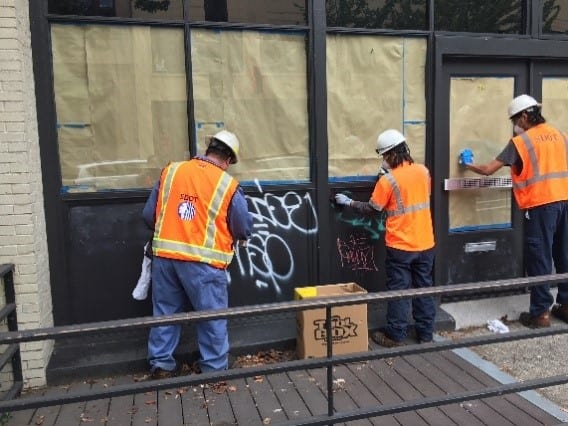
Street Maintenance crews working on Capitol Hill.
Despite setbacks due to the pandemic, our Urban Forestry team was able to dig deep and approach their work in new and adaptive ways. So far this year they have pruned over 4150 trees, delivered on over 1200 landscape maintenance events, and planted more than 360 new street trees.
Our Street Maintenance teams juggled multiple priorities successfully this year to keep our Clean Streets partnership running smoothly, consistently meet our pothole service levels throughout the year, and clean and maintain our growing bicycle facilities. New rental equipment and additional planning and coordination paid off and we were able to do this work despite limited funding.
In addition to their planned work for the year, Street Maintenance and Urban Forestry crews were proud of the work they did cleaning up after the dismantling of the CHOP zone. Crews worked side by side helping the community get back normal by providing street cleaning, sidewalk cleaning, litter pickup, and graffiti abatement.
Madison BRT/Rapid Ride G Reached Final Design
The Madison St Bus Rapid Transit/Rapid Ride G project reached a few milestones in 2020, including receiving the final Readiness and Risk Report from the Federal Transit Administration, finalizing funding agreements with Sound Transit and Seattle City Council, and notably, reaching the final design milestone. Construction is slated to begin in 2021.
Paving in Alaska Junction
Funded by the Levy to Move Seattle

In the heart of Alaska Junction in West Seattle, our concrete paving crews replaced roughly 30 concrete panels that were subject to wear and tear from the heavy vehicle traffic and many bus routes that converge in the area. The pavement had become a safety issue for the many people walking and rolling in this neighborhood. The team managed many challenges, including multiple underground utility lines, and coordinated with Seattle Public Utilities to replace old and damaged drain inlets. Underground utilities present a unique challenge to our crews, who are very careful to find and protect them during excavation operations to keep everything running smoothly for nearby residents and businesses.
Bridge Repair in Whatcom County

Our Roadway Structures staff partners with Seattle City Light to inspect and maintain some of their assets. A recent project had them rebuilding Happy Creek Bridge in Whatcom County. Each day, they were shuttled by boat to the jobsite and took precautions to ensure the water and environment were protected. Performing this type of work for others allows us to share our expertise and help balance our resources.
Alaskan Way Viaduct Program

Following the opening of the SR 99 tunnel, during which our SDOT Response Team, bridge and other crews and engineering staff developed and revised multiple detours to keep people and goods moving, we worked with other City departments to permit and support WSDOT construction of the remaining contracts to fill the Battery Street Tunnel and portals, reconnect lower Queen Anne to South Lake Union near the SR 99 north portal, and reconstruct the City street network around the SR 99 tunnel south portal.
Now, as work on the waterfront continues, we’re seeing the new waterfront begin to take shape and become a resource for all Seattleites for generations to come.
Stay Healthy Streets
We’re proud of our team’s rapid and innovative response to the COVID-19 pandemic. Our designers and signs and markings crews, with assistance from concrete crews, converted over 25 miles of Neighborhood Greenways to Stay Healthy Streets. This created physical distancing space for people walking, rolling, and cycling, resulting in a 357% increase in people walking and rolling, and 111% in cycling! We also worked with Seattle Parks and Recreation to implement Keep Moving Streets to support physical distancing near parks. These quickly became popular for people to stay active outdoors along Lake Washington Boulevard and streets near Green Lake, Golden Gardens, and Alki Point.
Rainier Corridor Phase 2 Project
Funded by the Levy to Move Seattle
To help us reach our Vision Zero and mobility goals, SDOT’s Vision Zero program and our crews implemented bold street design changes to address a long history of serious collisions on Rainier Ave S. These changes made Rainier easier to cross for people walking and rolling, reduced vehicle speeds, and enhanced transit service by adding new red bus lanes.
Speed Limit Adjustments

As part of our Vision Zero commitment, we made speed limit adjustments throughout the City on more than 200 miles of street. Now, most Seattle’s arterials are 25 mph speed limits, and our signs and markings crews, with assistance from our urban forestry crews, changed signs in 2020 and will complete the sign installations and additions work in 2021.
Leading Pedestrian Intervals
Our signal crews have installed leading pedestrian intervals (LPIs) at more than 300 intersections to date. LPIs improve safety by giving pedestrians three to seven seconds of a head start in the crosswalk before people driving get a green light. So far we have seen a 48% reduction in pedestrian turning collisions and a 34% reduction in serious injury and fatal pedestrian collisions at these locations.
4th Ave Mobility Improvement Project
Funded by the Levy to Move Seattle
We began implementing the 4th Ave protected bike lane (PBL) – a key segment of the Center City Bike Network – which provides access to destinations such as the Seattle Public Library, numerous shops and restaurants, and places of business while also providing connections to other important bike facilities. Our signs and markings crews and our signal crews both played key roles in this work.
Funding for Transportation Priorities
In November, Seattle voters approved the Seattle Transportation Benefit District ballot measure by more than 80%! This ensures the critical elements and bus routes of Seattle’s transit network are maintained for people who rely on it for work access. It also prioritizes equitable access to transit for people feeling the most strain on their household budgets and supports service as Seattle’s transit ridership recovers from the COVID-19 pandemic.
And over the course of 2020, we secured more than $25M for 11 projects in federal grant competitions through the Puget Sound Regional Council and garnered $3.5M in regional contingency funds for the West Seattle Bridge project, with $15M more pending in early 2021!
Transition to Accela
We successfully launched a major software change for our Street Use permitting system in this virtual environment. The overall update took nearly a decade and $20M to deliver. This launch went smoothly, and we were able to shift our normal outreach strategies to train and virtually communicate with internal staff and many permit applicants. Our team issues over 20,000 permits annually and we did not experience any changes to that number in 2020 because of the COVID-19 pandemic. This was no easy accomplishment and we’re grateful to everyone who made this transition successful!
Public Space Management (PSM) Stay Healthy Permitting
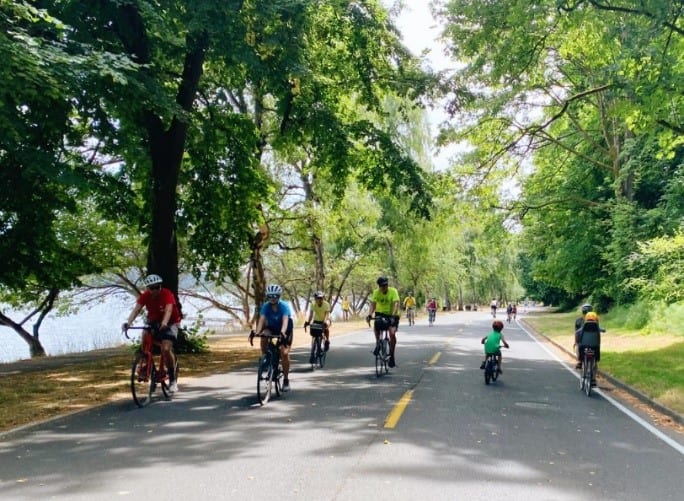
When the COVID-19 restrictions hit, the PSM team stepped into action to support businesses big and small with new free permit types allowing businesses to open sidewalk cafes and vending into the right of way to continue to work. To date, we’ve issued over 100 permits to support businesses. Our team created programs to help communities to safely gather (in a physically distant way) in the right of way – like Stay Healthy Blocks, and special editions like the Trick or Street, Rock the Block, Streetsgiving, and Brand New Year blocks. These programs allowed people to use the right of way and to come together as a community for one-time events.
Transportation Equity Workgroup
In 2019, as part of our ongoing commitment to building a more equitable transportation system, we convened the Transportation Equity Workgroup. In 2020, this group continued their collaborative work to create community-guided equity recommendations that will be included in SDOT’s first-ever Transportation Equity Agenda, a framework for transportation equity goals and priorities for the department currently planned for completion in 2021.
Building Transit for the Future

Together with Sound Transit, we advanced planning, permitting, engineering, environmental review, racial equity analysis and community engagement for the West Seattle to Ballard Link Extension (WSBLE). We also helped accelerate the permitting and early construction for phase one of the 130th Street in-fill station on the Lynnwood Link light rail extension.
145th | SR 522 Bus Rapid Transit Project
Together with Sound Transit we refined the preliminary design for the 145th/SR 522 Bus Rapid Transit project to significantly reduce the amount of private property, including affordable housing, to be taken for right-of-way expansion, and improved pedestrian and bike safety at key intersections along the proposed route.
Innovative Curb Space Management
As part of SDOT work to support businesses and communities during the pandemic, our team installed over 560 priority pick up zones parking signs for restaurants and retail, launched a parking permit program for hospital workers, and implemented a commercial vehicle load zone pilot project in Belltown with the University of Washington’s Urban Freight Lab.
Scooter – Bike – Car Share
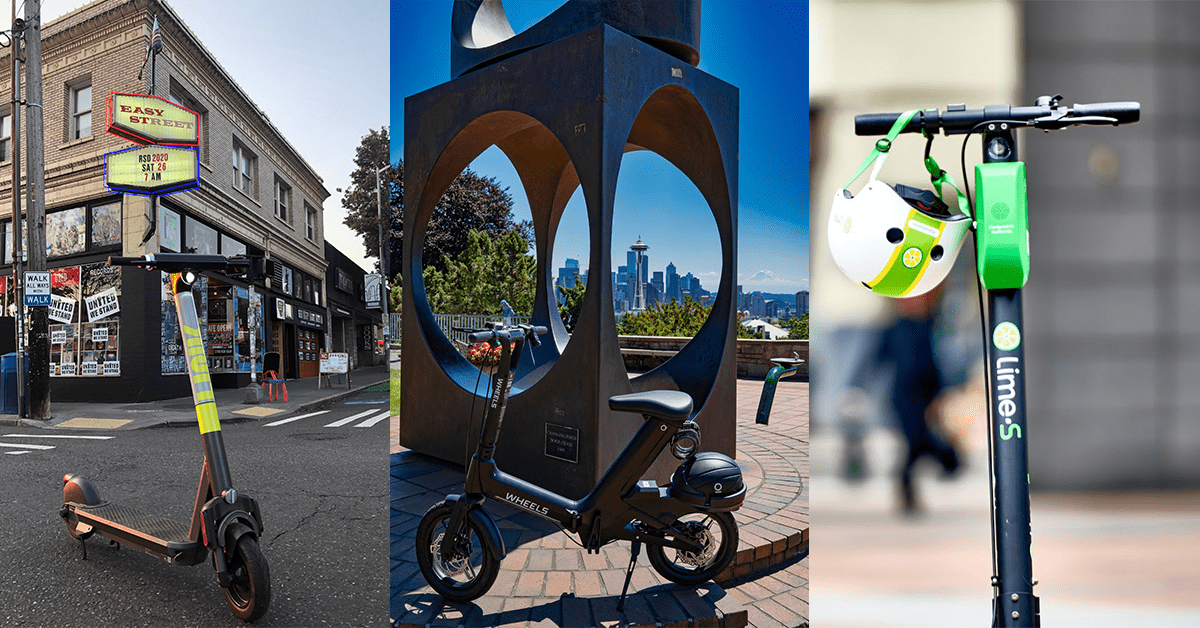
To help people get around Seattle in new, affordable and low-carbon ways, we launched a new scooter share permit program, continued our bikeshare permit program, and welcomed a new carshare operator (Gig) to Seattle.